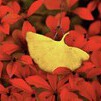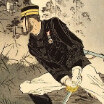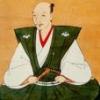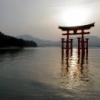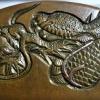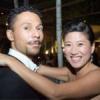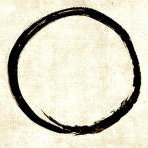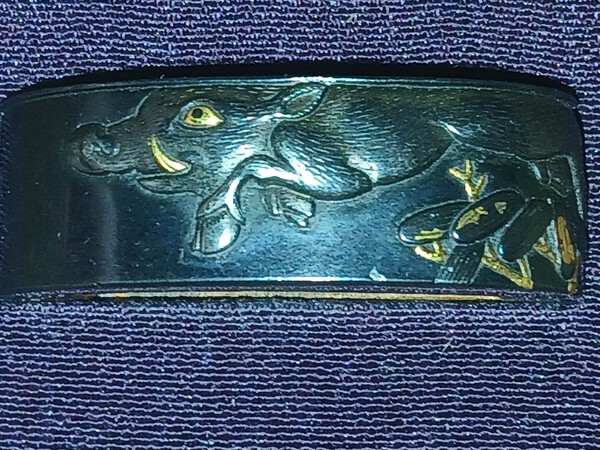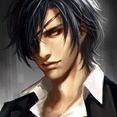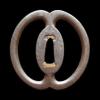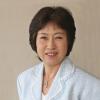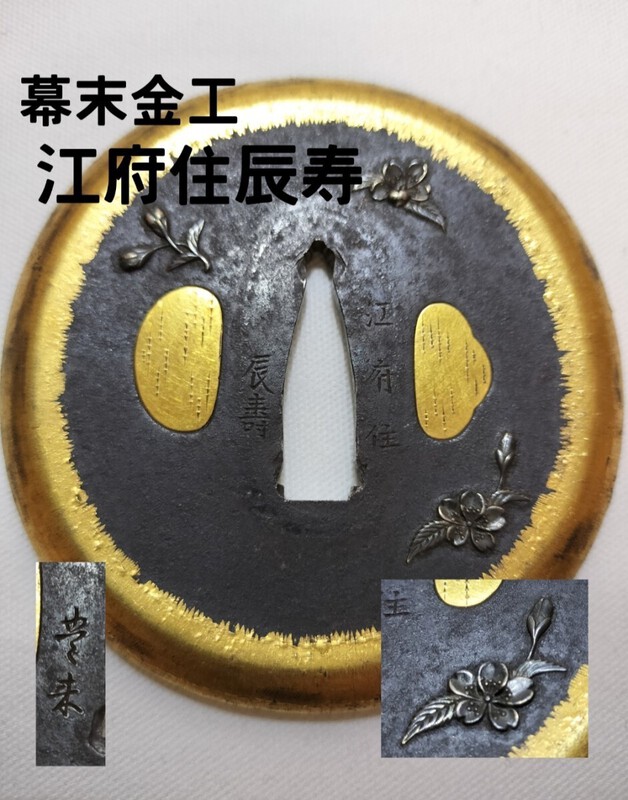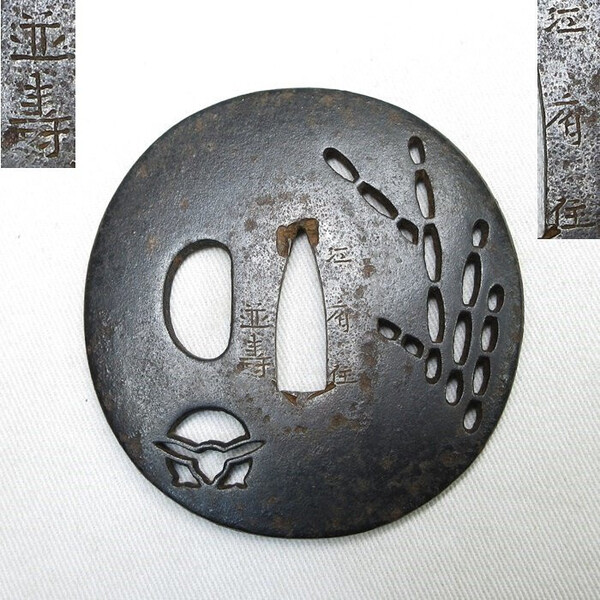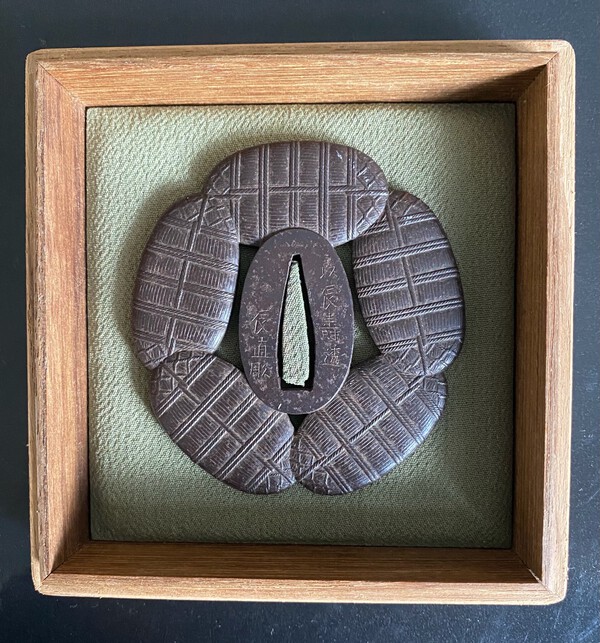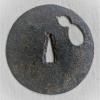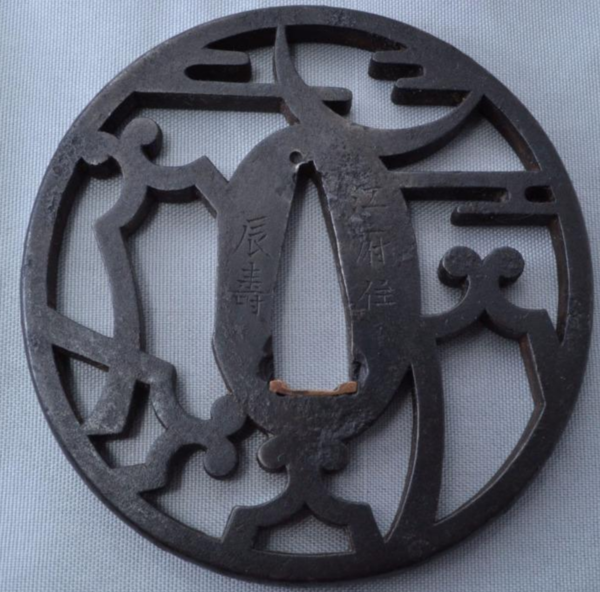Leaderboard
Popular Content
Showing content with the highest reputation on 11/23/2024 in all areas
-
5 points
-
The Yamada family preferred the body in a lateral position (sokuga'i), as it allowed testing of Wakizashi and Tanto. Tests were conducted with special kiri-tsuka (there some mentions of specially weighted Tsuba used) which were to simulate Koshirae and assist with the cut as well. Wakizashi & Tanto were tested with this kiri-tsuka so they could be used in the same manner as a long sword. The practice of Tameshigiri by the large families was quite systematic and sophisticated for the time.4 points
-
Hmmm... Not sure where this idea came from, but it is quite inaccurate. There are a good handful of pre-Edo tsubako who regularly signed their works. Among them are the two Nobuiye, the two Kaneiye, the early Yamakichibei smiths, Hoan, Sadahiro, Umetada Myoju, Umetada Mitsutada, and Koike Yoshiro Naomasa. So, not only were there pre-Edo smiths who regularly signed their tsuba, but each of these artists is generally regarded as one of the very finest tsubako of any era in Japanese history. This doesn't have much to do with the OP's concerns, but I did want to respond to that statement for educational purposes...4 points
-
Update on the Navy anchor stamp we have all been attributing to the Toyokawa Naval Arsenal. We no longer believe that to be the case, and think it is a generic Navy Inspection stamp, not specific to any arsenal. Thomas - @Kiipu - has been making this point for a few years, but it never caught my attention (chasing too many other rabbits at the time). So, he got Mal - @mecox - to listen and stir the pot. For decades, we have called it the Toyokawa Naval Arsenal stamp because of Ohmura's page and Richard Fuller showed it as such in his books. The chart on page 228 of his '96 edition came from someone or something before his work, and he now agrees with Thomas and Mal. -- The stamp, on swords, only appears on blades made by the Tenshozan factory. They are stainless steel blades made by Tenshozan (some stainless blades were made in Seki, but likely processed by Tenshozan). Two blades made at the Takayama forge have been found with the stamp. -- The circled anchor is also seen on things not associated with Toyokawa, like aircraft and electronics labels. -- No documented evidence could be found showing that Toyokawa was in any way associated with sword manufacturing, or processing, while it has been found for other arsenals like Sasebo, Maizuru, and Yokosuka. Mal is revising his Navy Swords articles, and the Stamps of the Japanese Sword document will carry this revision when it comes out next March. For the record, these are the stamps of the various arsenals. They were hand drawn by the original author and slightly inaccurate, but nothing that significantly impacts our point. The circled anchor is not on the list.3 points
-
3 points
-
To add to what @oli said, definitely buy a blade with papers, but don’t buy a blade just because it has papers. As you study you find schools, periods, smiths, that excite you. Seeing swords in person will confirm or change your thoughts and you’ll form an idea of what excited you and you can find an awesome sword with a $12k budget.3 points
-
Now listed on ebay, one sincerely hopes a donation to the board will be made when sold? https://www.ebay.com/itm/146209295174?itmmeta=01JD9PE31C6SQ229VN35CGFMAT&hash=item220ac0cb46:g:UkwAAOSwiMFnPnqe&itmprp=enc%3AAQAJAAAA4Mxmj%2BiGvOveHXEBClPb29hVAq0e4mZbTc54CyW%2FARak0i27YqDDHCBjyU81UNx3XShNnrOSnK32OvhobekMv4h7%2BeXK7r5Y7a1%2FxJHHz2KPUm2mrfanH%2FYMdTQxje0N4G%2FzOcjfohb%2BYnTzwXF6GiPqJgPS062qSC2CPWfjrsLKNv%2BjqF2GIr4wKqoD%2FnsKuIcgaJM%2FAHGlREjKcP5uVMqlvq0taUe9ZeS5FktrEXGJwC7f4zWGdUcj%2BCC6IPuOZiJO59qg8bXqvvMBkOgiQNcAJ17RC%2BZIFmb0PFVwFBjH|tkp%3ABk9SR-KwuLbqZA3 points
-
Sorry to say it is a paperweight souvenir, it might be as old as 1980? - not made in the Muromachi [1336 to 1573] - a time when they didn't sign tsuba as far as I know. https://www.ebay.ca/itm/186730994595 I do hope your friend did not pay very much. The seller is either ignorant or a conman.3 points
-
Glad to hear you're still kicking like a Marine Stephen. Agree, new blood is important and some quality new guys. This hobby is a strange one. Some old guys that I thought would collect forever faded out of the hobby, and moved onto other things. Some left social media completely (Can't say I blame them) And then we have natural attrition. And the fact that the average age in this field is so far above most other hobbies. We need the new guys. But with such a learning curve, few can put in the effort it takes to even get to novice status. After 20+ years, I still feel like a beginner. That's why events like the DTI and shows and social meet-ups are vital. And for those not aware, this guy @Stephen has been one of the most consistent supporters of this forum since the beginning. We owe him a lot.3 points
-
A rarity Wakizashi: Mumei(Unsigned)(Omiya)with Saidan-mei(NBTHK Tokubetsu Hozon Token) - Japanese Sword Shop Aoi-Art2 points
-
One of the sections in Koichi's link of Ito Sanpei san's commentary caught my eye, which speaks to the issue of symbolism and meaning. He includes both sides of the enjoyable argument about the artist's intension (explicit vs. unknown/unknowable). I would argue that the more Buddhist the iconography, the more likely that the latter predominates. In my conversation with Ito Mitsuru, I don't think it's possible to make a tsuba that you can't explain the design of at that point when you make and sell it. Sellers also use sales pitches such as "This is a copy of XX, so it's good luck" or "It's popular in the capital right now". When making a tsuba to order, I think the customer specifies the design with a specific intention. However, there are many tsuba classified as Kanayama tsuba whose design intention is unclear at this point. In the introduction to the characteristics of Kanayama tsuba in "Open Tsuba: Beauty of Bushido" (by Sasano Daigyo), it is mentioned that "There are many square-mimi (square edges), thick tsuba, many tsuba with unclear meanings, and steel bones protruding from the tsuba edge, and they are small tsuba by design. "However, the designs of Kanayama tsuba from the Momoyama period, which is a later period, include the "Matsukawabishi tsukashi" in our collection, as well as "Tsurigake tsukashi," "Shining light tsukashi (clock tsuba)," "Lightning tsukashi," "Thunder pattern tsukashi," "Shadow scale tsukashi," and "Jojo tsukashi," and while the intention is unclear, there are aspects of the designs that are easy to understand. In modern times, it is called "unknown watermark", but I think it was a well-known design at the time. However, compared to the designs of other schools of swordsmen, such as old swordsmiths, old armorers, Kamakura, Heianjo inlaid tsuba, Owari watermark tsuba, and old Shoami tsuba, the Kanayama tsuba design is unique. I think that the reason for this uncommon design is that it was made with the assumption that it would be used within a certain organization (for example, a specific school of swordsmanship like the Yagyu tsuba, or for the warrior monks of a specific temple) rather than with the intention of selling it widely on the market... And of course many motifs were simply a family mon, which was stylized and abstract, but also symbolized some meaningful martial ideal, omen of good luck, or some utilitarian purpose that favored victory with perseverance and valor. I have just ordered Sasano Daigyo's book since it is so heavily referenced by Ito Sanpei san.2 points
-
2 points
-
2 points
-
2 points
-
Mostly we are looking for a definitive, and thus satisfying explanation, in this particular case a Tsuba motif. But there are Japanese design motives which are intentionally unclear and could be interpreted in different ways. So everything You will see in it is correct! Maybe an artist created a Tsuba without the purpose to depict something. He has had just fun by playing with forms or varying existing ones. In these cases just enjoy the result and admire the beauty of shapes and surface. And the little secret not exactly to know what it means keeps it more interesting. Florian2 points
-
You’re going to have to narrow your search a bit. What do you like? What do you want? What is your favorite smith/school/era/other. You’re not just buying a blade because it is Tok Hozon or because it is $12,000. If you walk into one of the larger dealer shops and say “I want to buy a blade for $12,000”, they will probably look at you and shrug their shoulders. They probably have as many $12,000 blades as $5,000 blades. A small shop may have 1 or 2 $12,000 blades and only show you what they have and you have to pick from that. Study until you know what you want FIRST.2 points
-
A ken from the Walters Art Museum with a closer looking handle. https://art.thewalte...er-lotus-decoration/ No dragon involved with this one I can see the rice bale idea on the tsuba though, so the handle could be modeled on that theme.2 points
-
I recently acquired a new fuchigashira (been in my possession for about a week now) that I wanted to share with the forum. At this stage it is probably now the best piece in my collection and has been signed "Sozui". The mei appears to match one of the variations of Hamano Sozui's signature and from what I have read, Hamano Sozui would often create pieces with Japanese and Chinese folklore themes, so a Sojobo/Tengu design would fit his modus operandi. The work is a pretty high quality with an inlaid stone used for the eye of the Tengu figure as well which leads me to believe this might be an actual Sozui piece and not gimei... The pictures honestly don't do the piece justice as they were taken from my phone with 5x zoom and compressed to meet file size requirements but let me know what you all think!2 points
-
I have wondered that, too, @nulldevice, especially when they reflect a multiple-body test. I only recently purchased Sesko’s book, so I haven’t read all its 378 pages. Here’s a partial answer from it about the process: “These special kiri-tsuka had not only the function to provide a more robust hilt but served also as additional weight. The heavier the blade the more power there was in the cut and the better a blade would cut into or through a target. Apart from that, kiri-tsuka were also used to test ko-wakizashi and tantō under the same conditions as long swords. Normally mounted, such blades are too short and too light to enter a test medium in a representative manner.” He also talks about using lead tsuba to increase the weight of ko-wakizashi and tanto. But I don’t yet know if he discusses the definition of a complete cut with these short blades.2 points
-
If my friend Okan is correct [very likely ] - give that thing a big miss - try this one it is more interesting, genuine and a lot cheaper https://www.ebay.com/itm/2963516431752 points
-
Yes rare. This is a katana I almost bought through Darcy back in 2021, but timing was bad after losing my job. Nanbokucho Sadatsuna with a cutting test and #62 Torokusho registration paper so early and Daimyo owned. Apart from a Kaneuji blade (#17) this is the earliest registration I've encountered. https://katananokura.jp/SHOP/1907-K01.html2 points
-
What a great and interesting thread. Some great posts here and really awesome observations. I agree with Kirill: there is no clear solution to some of this debate. So much of collecting is like that old saying my mother had: "'It's all of matter of taste,' said the lady after kissing the monkey's bottom." And it is all a matter of taste. There are some obvious agreed on standards and facts, yes, but these shift over time. So, if you believe -- as some die-hard collectors do -- that everything after 1394 is Shinto, then even the most astounding Tadayoshi or Sukehiro or Kotetsu blade will not convince you that the sword is anything more than a nice "newish" folded, sharpened piece of steel. "Cute," as one Ko-Koto enthusiast commented about my Nosada tanto when I showed it to him years ago. On the other hand, if you believe, as some collectors do, that blades without verifiable signatures, are just a blank canvas on to which so-called experts can project their opinions, then nothing without a mei will move you, no matter how stunning the work, because -- as the Asahi Token website says -- "No inscription is no inscription, and it is impossible to determine the author." So - one more cliche - beauty really is in the eye of the beholder. But this thread started out about the market. And the market and taste don't always live in the same neighborhood. So, contrary to the views of Mr. Nakahara (of The Facts and Fundamental's of Japanese Swords, and the Asahi Token website,) a TokuJu O-suriage Ko-Bizen Masatsune Tachi will have no shortage of buyers and will not stay on the market very long, if it even goes to the market in the first place. whereas a good Shodai Tadayoshi might sit around for weeks or longer on a website before it is picked up. This has more to do with the market emotions -- supply and demand, perceived rarity, desirability and exclusivity -- than any comment on quality. And I agree with everybody who says, "collect what you like;" "look for the best condition you can find at your budget;" "buy the sword, not the papers." It is all well and good and true, because collecting is personal. But when the time comes that you might want to sell that piece or trade it for something better, it's is another story entirely. Now you are entering the world of the market. And again, I agree with Kirill: For the marketplace, attribution is quality, attribution is value, top tier papers are both, and that leads us back to the opening question of Lurkez. Since this thread started, I spoke to some dealer/broker friends in the U.S., Europe and Japan and all agree that those amazing pieces from the Kamakura and Nanbokucho like we see in books are becoming harder and harder to find. Many trusted and known collectors are now looking for them and they must put word out that they want them. Then they wait. And when a Juyo Hiromitsu becomes available, it does not go on a website; It is offered at steep prices directly to those collectors who have been waiting, bypassing the open market. This is hardly surprising. Thus, as I said in my earlier posts, yes, Lukrez's observations are largely true. But as the old cliche (God, I am full of them today) goes, "the Market abhors a vacuum." So, when the supply of one commodity runs low, the market looks for the next big thing to fill it, such as works that were previously overlooked or taken for granted, like Ukyo no Suke Katusmitsu, and other top Sue Bizen works. Then lo and behold, prices for Sue Bizen works start to climb and become desirable. Just look at the prices of good Bizen moroha tanto. A few years ago you could pick these up for between $2000 and $8000 (unless it had a zokumyo-mei Yosozaemon signature.) Today those prices -- from what I can see -- have doubled. Eventually these too will be even scarcer than they are today and thus more desirable and collectors will leave word with dealers wanting one and soon you won't see them on websites either. It's the market equivalent of the circle of life. In some ways, the market can be both cruel and democratic. But it's always been that way, responsive to trends and ever-shifting tastes of collectors, and kindest to those with the most cash.2 points
-
@Dan tsuba I’m new to this hobby, but I don’t agree with you on that point. If you’re serious about this, I don’t think constantly looking for tsuba you can afford is the best way to learn. What’s wrong with buying a $500 tsuba instead of 2–3 $150 tsuba? Don’t you think you could learn more from better-quality pieces? Ebay, Yahoo, and Jauce are full of lower-level tsuba. A forum member once gave me similar advice regarding swords. He told me that if I was serious about collecting, instead of buying $1k–$2k swords, I should save up and aim for better names or schools. That way, I’d have higher-quality pieces in my collection(maybe not 10 but only 3) and could learn much more from them. I don’t know how many tsuba you currently have, but wouldn’t you rather have only 5 Tokubetsu Hozon papered ones instead of 50 lower-level ones? (I'm not qualified to judge, it's just a question)2 points
-
2 points
-
2 points
-
Howard, dealing firstly with the construction, the dish itself will be copper and the rim and foot rim could be gilded copper or brass. Silver was rarely used for the actual body (apart from some ginbari enamels), not even by the likes of Namikawa or Hayashi. These dishes usually employ a brass alloy for the wires which is sometimes gilded. Silver wires are found on more expensive examples but from the images we can’t really tell what your wiring on the front is made from. The swirl pattern on the back will most likely be brass and the swirls are there to hold the counter enamel paste securely during firing. The reverse needs to be counter enamelled to keep it stable during firing or it distorts and cracks upon cooling. These plates and dishes were made in vast quantities during Meiji (this is Meiji C1890 ish) by numerous scattered studios and unless signed (very few are) it is not possible to pinpoint a maker…..there were many. They were aimed as usual at the gaijin market in Japan and later for mass export. The quality can vary hugely as can the aesthetics of the design. Hawks, falcons and owls were all massively popular subjects in Japan and yours shows a Goshawk (??haven’t actually checked the bird book) hitting a nest of sparrows. It looks a better quality piece with lovely colour graduation etc. The chick falling out of the nest is a bit sad🙂 Overall looks to be a better quality piece with a dramatic scene. ……hopefully not damaged?2 points
-
Thanks for the kind words Stephen. This forum has been a wealth of knowledge for me. I'm certain I would've probably purchased 1-2 questionable blades by now had I not found this place. Thanks to much studying, good friends I've made along the way, and being at DTI, I'm happy with my first nihonto purchase and it's much better than I could've ever found on my own without some wonderful resources such as this site and some great books to help me out although I still feel like I'm very much a beginner in all of this.2 points
-
Fun thread and happy the hobby is alive and well. Great sword Yurie san. Also happy to see new members who are well versed in the Nihonto world. I was concerned the NMB was on its last leg, with new guys like Adam ( I am impressed with you knowledge, you must have been interested well before here) and other too. New blood is very important to keep the forum alive. It's given me want to drop in more often. Especially since Brian has brought back the old ways, going to go check Bobby's shindig Pics now. There will be donation to the board before years end. Maybe sooner.2 points
-
1 point
-
1 point
-
1 point
-
I just bought a book from Grey and he is in Duluth,MN which is only a few hours from me1 point
-
So, a couple of thoughts. Naginata were not always as “artistic” as normal tachi or katana. This is not to say they were not well built but the main focus was on functionality rather than fine jigane, scintillating hamon, beautiful hataraki, etc. So, on average I have noticed, anecdotally, they are more robust. Also, if you notice the weight of this blade, it is actually rather heavy for its short length. Therefore it must be thick and robust and it renders itself suitable for testing once the long tsuka mentioned above is attached.1 point
-
Thanks for your insight Kyle! I did notice the connection in the stroke of the mei as a potential albeit minor inconsistency in the mei. The floating stroke in the top left however is something I hadn't considered before. I had actually purchased this item based on the quality of the workmanship and the design alone, the possibility of it being a work from an elite artist was always just an added bonus. Here is the authenticated mei for context, for anyone else reading the thread: I still do think it is a pretty close match to the mei in the bottom right... This piece is probably still the best in my collection right now whether it is gimei or not.1 point
-
Thanks for that @atm, it looks like I have some reading to do. That's interesting to me how the swords were given extra mass to help with the cut. I wonder how far this practice went and how it may have lead to an uneven playing field? i.e. certain testers weighing their swords down more thus having more cutting power vs other testers. It certainly seems to add some flexibility to the cutting tests and more context that interests me to study further.1 point
-
I suppose I should read Sesko's book on cutting tests but I have wondered on shorter blades like this one that are barely the width of a human torso/waist how a "complete cut" would be registered. Say a cutting test with 2 or 3 bodies and the tester has a 19" sword like this one, a human swinging in an arc (or maybe their technique was fairly vertical) does it have to completely cut through the body side to side in order to "count"? Or if it cut clean through but only cut 2/3 or 3/4 width wise did that count? Its sort of gruesome to think about but as I've seen some wakizashi and this shortened naginata with saidan-mei its something that comes to mind for me moreso than for 27" blades which seem more than adequate to cut clean through someone. I suspect I need to just read more on the topic.1 point
-
I agree with this, however beware that higher price doesn't always mean better quality! I have no issues with paying more for quality but it takes some time to train your eye to be able to spot mid-high level work and there are also over-priced pieces floating about. Train your eye to recognize quality before spending! I've only just started to reach the point where I can identify the higher quality stuff by eye and distinguish it from mid to low level work. I did well with my last couple of purchases and I was willing to pay a bit more for them, but I've also had some solid purchases under $150. Price is not everything and can be deceiving.1 point
-
1 point
-
1 point
-
1 point
-
1 point
-
There is a consideration on the motif by Ito Sanpei. Ref. 無銘金山鐔「山道文透かし」鐔 He suggests that the motif is 山道文 – Mountain road pattern1 point
-
Thank you so much, I'm already reading some articles and learning so much. This truly is a treasure trove of information. Thanks as well @GeorgeLuucas, I have both sites bookmarked for lots of future reading.1 point
-
Hi, Everyone, I attended DTI and bought one, 長船倫光 (Osafune Tomomitsu, Mumei He was a student of Osafune Kagemitsu. Around Enbun・Jyoji era(1356-1367) This is O-suriage which is fine for me since my arm is short, otherwise I can not open the sword by myself. This was the one displayed inside the glass case of the Sokendo booth. The Kissaki needed a little polish, so I left it for the polish. The person who took this photo stood at the lower end, therefore, the entire shape is distorted. On the Keicho-do thread, I posted the photos of the Yakata-bune party hosted by Mr. Robert Hughes. It was great fun. Thank you, Mr. Robert Hughes. I have more photos, but it does not allow me to attach. The kissaki is between the chu-gissaki and o-gissaki.1 point
-
Thank you to all who have posted here. I truly appreciate it. Best regards, Marcus1 point
-
1 point
-
1 point
-
1 point
-
Pietro, Ray is just offering a TATSUTOSHI I hope it is not the same as in post No. 7.1 point
-
1 point
This leaderboard is set to Johannesburg/GMT+02:00

.thumb.png.4c5df79fec171b2dc4a23af38e280a4d.png)


